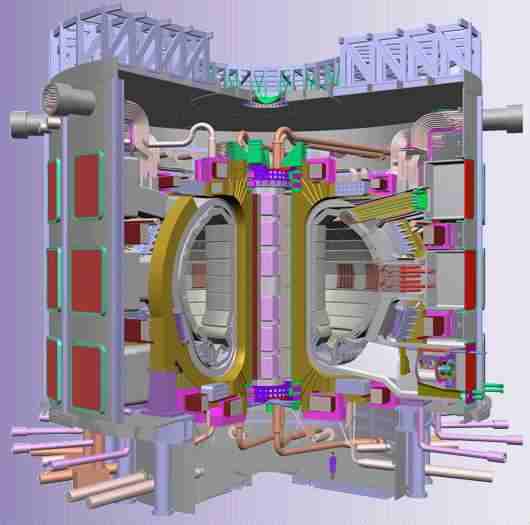Nuclear Data Libraries for Advanced Systems: Fusion Devices
Fusion Evaluated Nuclear Data Library
FENDL 3.0
An IAEA Nuclear Data Section Coordinated Research Project
BACKGROUND INFORMATION
Based on the recognition that energy plays an increasingly prominent role in the world and the expectation that nuclear fusion can provide an abundant energy source, the IAEA is currently providing support for the exchange of scientific and technical information on fusion research through conferences, meetings and projects. The most important initiative on fusion research is presently the ITER project. All the materials to be used in ITER went through a procedure of quality assurance which utilized benchmark experiments (bulk shield experiments, streaming experiment, Silicon Carbide blocks, Tungsten blocks, Breeder blanket, etc.). These experiments are tested against simulations based on Monte Carlo or other transport methods. Here, the role of basic Nuclear Data information is fundamental. Only by using credible Nuclear Data Libraries will all of these experiments provide the necessary reliability for design and quality assurance.
The Fusion Evaluation Nuclear Data Library (FENDL) has been created under the auspices of the IAEA in the mid-1990s, and went through a procedure of validation by benchmark experiments by the Fusion nuclear data community. The first version of this library contained evaluations judged to be the best available by February 1997. The present version of FENDL (FENDL-2.1) was released in 2003, and has been extensively used for ITER material studies (ITER Project Management and Quality Programme: Quality Assurance in Neutronic Analyses).
Meanwhile, plans are underway to construct a facility to test candidate fusion reactor materials under high neutron radiation dose conditions approximating those to be found in a fusion reactor. This facility – International Fusion Materials Irradiation Facility (IFMIF) – involves accelerating high currents (up to 250 mA) of deuterons to 40 MeV and impinging them on a liquid lithium target to produce neutrons. Deuterons that strike elements of the accelerator transport system, as well as various target materials, would induce radioactivity that needs to be considered in the safe operation of this facility as well as in its eventual decommissioning. The status of energy differential deuteron cross-section data from a few MeV up to 40 MeV is considered by the IFMIF development community to be inadequate for the purposes of assessing the facility with respect to operational safety and licensing issues. In particular, the FENDL library does not contain data for incident charged particles (e.g. protons and deuteron), while the maximum energy for incident neutrons is limited to 20 MeV.
Recognizing these difficulties in March 2006, the International Nuclear Data Committee (INDC) recommended the extension of the FENDL library to cover the nuclear data needs of the IFMIF community. A Technical Meeting aiming at identifying possible detailed objectives for a CRP was held at IAEA, Vienna, on 31 October – 2 November 2007. The CRP has arisen as a consequence of the discussions at this Technical Meeting.
[ Top]
